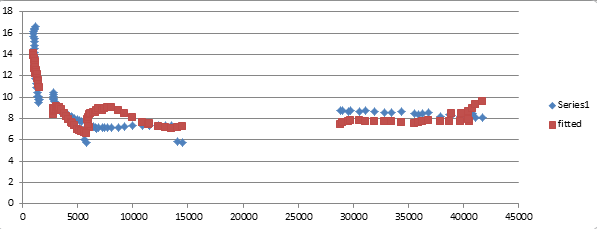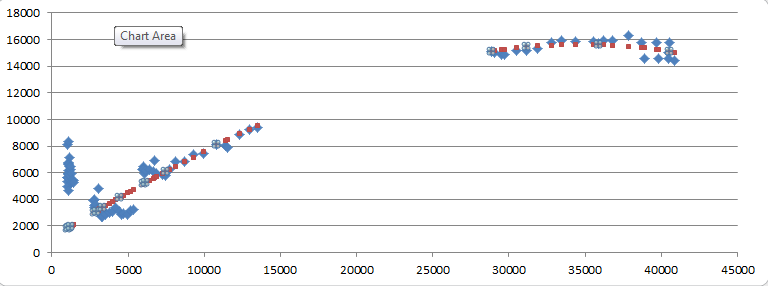Cat on a Hot Tin Roof by Tennessee Williams
My rating: 3 of 5 stars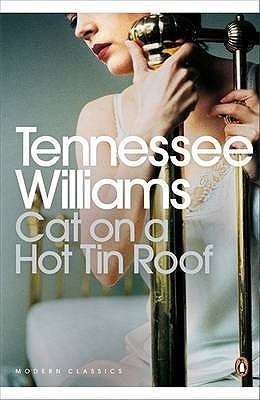
We all remember the pain of reading Shakespearean plays in school. Sadistic English teachers with shattered dreams of being something better forcing us to learn whole passages by rote …the quality of mercy is not strained…, without once reflecting on the irony of their own lack of mercy.
If you had intellectually snobby parents like mine, the closest to sympathy their innate veneration of the Bard would allow, would be the grudging admission that, “well, really Shakespeare is not meant to be read. It’s meant to be performed.”
Actually, during the later years in which my own intellectual snobbery got me reading his plays autonomously, I never found this to be true. Unless you’d already studied Henry CXXII part VI, live performances went too fast; you missed too much of the subtle word play or the historical context. Idem for Ibsen. As for my favourite playwright Miller, I always found the dialogue to be so supremely evocative of the scene that if anything a live performance introduced risks of spoiling the perfect acting I imagined in my own head.
However, for Tennessee Williams, I don’t think this is the case – at least not as far as ‘Cat on a Hot Tin Roof‘ is concerned. I read the play, never having seen it staged nor having watched the film. My first impression was the dialogue came across as hammy, overdone and at times (needlessly and repetitively) redundant, (such that the point could have been made with fewer lines and more subtext). To wit, the titular feline metaphor is hammered into the reader’s ears in Act I. Not once, but twice.
Moreover, if you are looking for an entertaining plot or clever character arcs, you have come to the wrong place. Williams is writing as an American realist – he sees little scope for moral progression, at least not in a story that takes place over one steamy night in the big house of a Southern plantation. This left me wondering what the big deal with Cat might be, whether it wasn’t just a mediocre script that benefited unduly from good timing and a nascent American Empire, hungry to grow cultural roots in the fertile soil of its burgeoning economy.
On reflection, though, it occurs to me that these shortcomings would be somewhat attenuated in a live performance. There, we can imagine how strong performances might make the Southern nouveaux riches sparkle: the droll alcoholism in the fallen favourite son Brick, the desperate aching of womanhood in his wife Margaret. The bellicose, base honesty in his father, Big Daddy.
Indeed, Cat might be as much about the atmosphere as the story. It evokes a particular mood and feeling; which perforce comes alive not in the words themselves, but in how they are spoken and in the silences that can unshroud a deeper meaning. This is not a finished piece of literature. Rather, it is a set of instructions to the actors and director, and should perhaps be read by them and them alone.
View all my reviews
Category: Book Reviews
Non-fiction is just fiction written by authors who are too lazy to think up a good story
Shady Characters: The Secret Life of Punctuation, Symbols & Other Typographical Marks by Keith Houston
My rating: 3 of 5 stars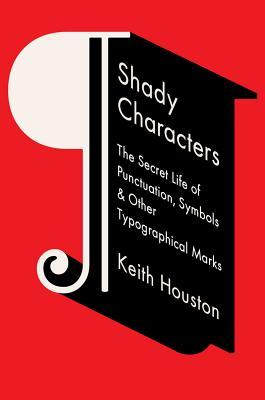
Sure, non-fiction is a way of getting a lot of ‘facts’ down on a page – some of those facts might even be interesting. But you can do that in fiction too; oftentimes much better. Think of how much historical context is written into Trollope’s Vanity Fair; how much social history of the early 19th Century, all effortlessly woven in to a cracking good yarn. Without the constraints of a good story, non-fiction authors often give in to the temptation to dump an enormous amount of information in an unstructured, unsorted way that leaves the reader overwhelmed, confused or just plain bored. This is why I don’t read a lot of non-fiction.
For Keith Houston’s Shady Characters, I made an exception. This was partially because the subject matter – the origin stories of punctuation symbols, weird and common – was sufficiently quirky and yes, so incredibly nerdy, that it seemed bound to read a little differently, even for non-fiction. It was also because the book fell into my hands at a moment when I had nothing else to read.
In all, the book was not a complete disappointment. I learned some wonderfully useless things about punctuation marks I never knew existed, like the interrobang – a short-lived 20th Century hybrid of the question mark and the exclamation point, which looks like this: ‽
More usefully, the twisted road to modern typography takes you past some genuinely interesting historical waypoints. I was particularly fascinated by the detailed description of the typesetting used by Johannes Gutenberg for his 42 line bible, which was, after all, the ‘Star Wars: A New Hope’ of books. It blows my mind to think that with all the algorithmic typesetting we have today, the line spacing used to justify the first ever printed book is so perfect that it remains, to this day, the best typeset book in the history of print.
Another plus point (see what I did there?) was Houston’s clever use of the punctuation, fonts and even writing styles he describes, in that respective chapter to illustrate the examples he’s discussing.
All that said, Shady Characters succumbs to the original sin of non-fiction books, allowing its author to indulge in detours and asides that made certain paragraphs seem like we would never get to the next ¶ (which is called a ‘pilcrow’, in case you never knew).
Even more irksome is the New York Times-reading, smug intellectualism of the author. Just as the nouveau-riche indulge in conspicuous displays of wealth in a way ‘old money’ never would, American intellectuals like Houston always try too hard to be literate and clever, made desperate by their transatlantic cultural inferiority complex. In doing so, they sacrifice something of the message in pursuit of their ostentatious displays of learning. Bad writing is when, while reading, you can hear the sound of the author typing. In reading this book, there were moments when the sound of Houston’s ego echoed with every keystroke.
With fiction, it is the story that acts to curb the author’s ego, because he or she is bound by the plot and by the fictional characters, who – once defined – begin to tell their own stories. In this book, Houston had no characters to whom he had to stay true (at least not in the figurative sense).
I ask you, is it so hard to weave knowledge into a true yarn‽
View all my reviews
My review of Graham Greene’s ‘The Power and the Glory’
The Power and the Glory by Graham Greene
My rating: 5 of 5 stars
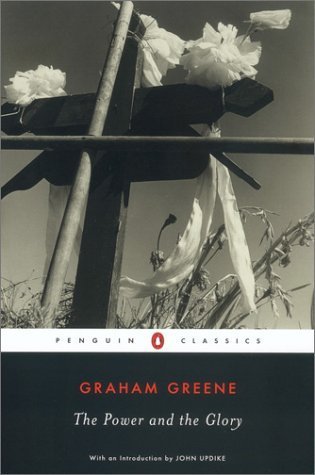
It is often said of writers that they must first read, and that if you want any hope of being a great writer, you must be a great reader. I don’t know if that’s true – I have known very gifted writers who read very little, and voracious readers who could not string a sentence together. One thing, though, I can say: certain books are so brilliant that they inspire me to want to be a better writer. There is no particular genre, or subject or period in history that these books belong to. What they all have in common is that they touch upon some ‘essential truth’, something that the writer himself knows to be true, and the force of his conviction leads me to be intrigued by his truth, to accept it into my own canon.
Graham Greene’s ‘The Power and the Glory’ reeks of exactly this kind of essential truth. A devout Catholic, Greene naturally questioned the shortcomings of his own Church. Like all thinking members of the Church of Rome, he must have been deeply frustrated with its contradictions, pettiness and displays of pomp and pride. In ‘The Power and the Glory’ he lays bare this frustration, by showing the Catholic Church at its most essential.
No, this essence has nothing to do with the Pope in Rome, or any great bishops, or the inner machinations of Opus Dei. Rather, it is a disgraced Mexican cleric of low rank – the ‘Whiskey Priest’ – on the run from the communists who control that state. These communists have a fiercely atheistic zealotry; one that is deliberately reminiscent of the Spanish Inquisition.
The priest’s persecution is set up to be deliberately Christ-like, in that he must endure hardship, insults and deprivation. And yet, just as deliberately, we are given ample reminders of the fact that the Whiskey Priest is no Christ figure. He is a grievous sinner, guilty of all seven of the deadly variety. His life before the Communist revolution was one of pride; of lust leading to the fathering and abandonment of a bastard child; the sins of gluttony and sloth; and all of this seasoned with an unhealthy dose of envy of those of his peers who had risen higher in the Church than he.
Now a fugitive, every policeman in the state hunts him. Yet he manages to elude justice for weeks. The pious peasants respect his office even if he no longer does, and they pay a huge price to hide him from the Communists. His fugitive status is not even a form of martyrdom, because he fails to uphold even the most basic offices of the Church with any remaining shred of dignity, despite the people’s need for his spiritual guidance. Rather, he flees because he is a coward.
The story is made gripping by the detailed, gritty descriptions of the scenery (beetles exploding against the walls, swamping hot rivers with lazy, rusted boats anchored) and the people (the odd-ball ex-pats, the corrupt police lieutenant, the indolent villagers). But its true appeal lies deeper. We want to know the Whiskey-Priest’s faith precisely because his whole persecution amounts to a deeply religious confession – a path to God and the religion he had never truly known, all through the glory days of his priestly reign. His path to God only opened up the day he was tested.
Yet Greene is too good an author to allow his Whiskey-Priest moral redemption on earth. In the brief moment in which he achieves safety and a degree of comfort, we see our anti-hero quickly revert to his old, sinful habits. The message from Greene is clear: there is no path out of sin except the unconditional acceptance of God and belief in His divine mercy.
As a religious person, I relate to this story on many levels. But though its essential truth resonates with me, I cannot say how it would strike someone with different philosophical leanings.
Would the power of Greene’s faith, exposed through this wonderfully crafted tale, ring as true in the ears of a 21st Century atheist, an adherent of the cult of The Science? I somehow believe it would.
But then again, I’m the sort who believes lots of things – like the only son of God dying on a cross outside Jerusalem, two thousand years ago.
View all my reviews
My review of Agatha Christie’s The ABC Murders
The ABC Murders by Agatha Christie
My rating: 4 of 5 stars
Before starting Christie’s The ABC Murders, I made the mistake of opening another book, Win, by the much overrated Harlen Corben. I abandoned after only 20 pages, and frankly only got that far because I was intrigued to know if a bestselling author could sustain that incredibly low level of writing beyond one ill-conceived chapter. So it’s probable that my high opinion of The ABC Murders is somewhat flattered by this comparison.
Still, the contrast between what sells today and what sold 70 years ago could not have been more apparent. Both Christie’s and Corben’s protagonists are cliched and superficial. Yet whereas Hercule Poirot’s arrogant self-importance is tongue-in-cheek (the reader is in on the joke), Win is simply insufferable. Christie’s characters lack depth because they are clever and deliberate illustrations – line art that indicates form rather than creating true texture. Corben’s characters, on the other hand, lack depth because they are badly painted hyperreal portraits, a poor likeness of actual human beings.
But where Christie really shows her mastery is in the pacing of the plot. I’m curious to know if she mapped out the sequence of murders and events carefully, the way an animator plans his drawings from pose to pose. Or did she just let it flow – frame by frame – and was so adept at feeling her way that the result was perfect timing – landing on the beats without the aid of a metronome?
Whether deliberate and practiced; or innate and lucky, the effect is that the reader feels loved by every page. Christie knows how to write with her readers in mind. You cannot hear the pounding of her fingers on the typewriter. There are no painfully obvious sequences of the otherwise cynical title character funding a shelter for battered women, sardine-packed in there by an editor because someone felt the protagonist had to be made more ‘likeable’. With the Queen of Crime, there is a simple love of the story, and a flair for sketching human beings – not perhaps as they really are, but with enough truthful lines that we, the reader, can fill in the gritty details with our imagination.
Hercule Poirot remains in The ABC Murders as he always is – larger than life. Preposterous, even. A shared joke between Christie and the reader. And yet he is as alive as any hero.
Agatha Christie will never be the Rembrandt of literature. But she is perhaps the Norman Rockwell, and that is a wonderful thing in itself.
View all my reviews
My review of Harry Harrison’s ‘West of Eden’
West of Eden by Harry Harrison
My rating: 5 of 5 stars
Like many children from troubled, broken homes, at age 12 I sought refuge from trauma by seeking to escape from the world that surrounded me. It was my good fortune that my chosen escape was not into drugs or gangs, but rather into books. I devoured works of fiction like an opioid – for how important were the financial woes of my family compared to the danger facing Frodo and indeed all of Middle Earth? How could the feuds of embittered parents matter, pinned against the fate of the majestic Ringworlds?
It was then that I found Harry Harrison’s West of Eden, a book that spoke to me even more than Lord of the Rings or Larry Niven’s Ringworld. Because Harrison’s epic is also a coming-of-age story, and that is what I needed at the time. It might be too much to say West of Eden, on its own, saved me. But it certainly felt like that at the time.
I rarely re-read books, but when I saw it last month on the shelf of a neighbour’s house (ok, it’s true I bought it for them), I perused the first chapter out of wry nostalgia. How would a fantasy coming-of-age story hit a reader whose coming of age was three decades in the past? Were the things I loved so much about it a product of circumstance, like that cheap packaged hot dog you had that one time by the campfire, which tasted like nothing else on earth?
To my great surprise, in under a chapter I was hooked all over again. Like the resolution of an Ultra-HD television, the richness in the narrative is at first only felt. It comes from an untold backstory that exists only in Harrison’s head. It’s not until you get to the appendix that you realise he bothered to think out an entire language for both the Tanu (the tribe of hunter-gatherers flying the banner for warm-blooded civilisation) and the Yilane (the dino-humanoids flying the cold-blooded banner).
With all the sensitivity of a subtle thinker, Harrison invites the reader to sympathise with both sides in this clash of civilisations. And in doing so, he makes a strong statement about the meaning of right and wrong. Like the protagonist Kerrick, a part of us cheers when the Tanu hunters plunge their spears into the hideous reptilian beasts. And like Kerrick, another part of us weeps at the wanton savagery and destruction of a beautiful Yilane, cut down in her prime. We can glimpse how the reptilians might see us – stinking, half-fur covered beasts with low cunning and no real knowledge of science. Is not every war a question of perspective? Is the Ukrainian soldier lying dead in the frozen mud any different to the Russian one?
West of Eden deserves to be called an epic because it is more than a coming-of-age story. It is more than a clash-of-civilisations story. It is more than just escapism. In the same way as Lord of the Rings, it transcends its own genre and tells us something important about who we: Like Kerrick, we are all, somehow, the damaged children of broken homes. And we are all searching for the peace and comfort of a better life. We are all alone, surrounded by the other, caught between two worlds.
View all my reviews
My review of Thackeray’s ‘The History of Henry Esmond, Esq.’
The History of Henry Esmond, Esq. by William Makepeace Thackeray
My rating: 4 of 5 stars
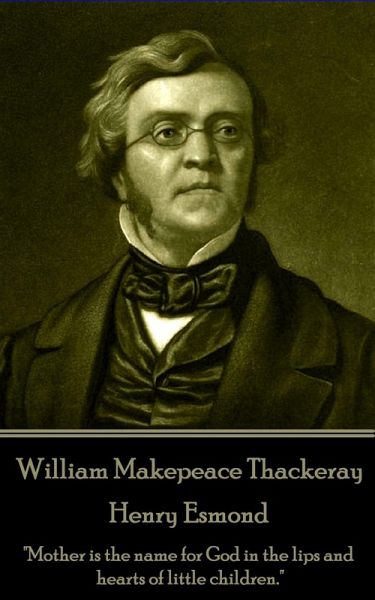
I was motivated to read ‘The History of Henry Esmond, Esq.‘ by the back cover blurb, in which it was noted that contemporaries of Thackeray, as well as the author himself, considered this novel not only superior to Vanity Fair, but in fact the greatest English novel ever written.
How could it be, I wondered, that a book which at the time was considered peerless, could today be utterly forgotten? Esmond, after all, appears on no one’s secondary school reading list. And while not technically out of print (in the age of print-on-demand, this is no longer a meaningful concept) you will not see this book on the shelves of booksellers. What’s more, all currently available editions on Amazon have less than half the number of reviews and a lower rating than my own first novel, “The Hydra“. What grim fate, then, could have befallen the greatest novel ever written in the English language?
The answer is important because of what it might imply about the nature of cultural capital as it is passed down to us through history. We assume, perhaps naively, that the great filtre of time is effective in separating out the literary wheat from the chaff. In other words, that the novels that survive the test of time represent the best of their kind, and therefore with limited reading time at our disposal, the casual reader should never bother looking beyond the Penguin classics shelf at their local Barnes & Nobel. As I cracked open the pages of the tattered 1950s paperback that chance had thrown into my possession, I wondered whether the filtre did in fact work as it was supposed to. Or were there great novels, Henry Esmond perhaps being one, which history had simply forgotten?
The plot line is linear yet compelling – like a nice piece of meat that doesn’t need an elaborate sauce. It tells the story of the title character as he straddles the religious divide between catholicism and protestantism, as well as the political divide between the Whigs and the Tories following the successful protestant insurgency led by William of Orange and his wife, Mary Stuart in 1688. Born to a great house but as an illegitimate son, our protagonist is likeable and nuanced. Esmond is a devout protestant and an English patriot, yet also fiercely loyal to the exiled catholic king, James III & VIII.
His love for his flighty and vain cousin Beatrix Castlewood mirrors his devotion to the ill-fated Stuart regency. These personal and political threads are woven together with delicious ingenuity, leading to a satisfying conclusion to the novel, including with a refreshingly surprising and modern ‘plot reveal’, which I will of course not spoil.
Yet I can’t help shrinking back from asserting this novel is better than Thackeray’s acknowledged masterpiece, Vanity Fair, or a host of other 19th Century chart-topping classics. As a historical fiction, much of Henry Esmond’s appeal no doubt lies in the readers’ prior knowledge of the events Thackeray brings to life – and by all accounts the author was a legit scholar of the age. To the modern reader, for whom the infamous misdeeds of Lord Mohun mean nothing, this spice is lost. Indeed, religious sectarianism is the pulse-raising plot dynamic motivating much of the action. But that which tore 17th Century England apart fails to inspire in the modern reader any emotional response beyond mild curiosity, save perhaps in enclaves in Northern Ireland or insofar as we can imagine parallels to the Middle East.
On balance, therefore, I would say that the great filtre of time is not entirely broken, even if great novels do slip through the cracks and get washed into the gutters of literary oblivion – and Henry Esmond is arguably such a case.
One message to would-be writers is, if you want your story to have lasting historical impact, know that adorning it with the baubles of The Current Thing will not be enough to earn you a place on your great great grandchildren’s bookshelf. For that, you will need the timeless elements of a perfect story, outstanding characters, compelling and unpredictable plot turns – and the most important ingredient of all: luck.
View all my reviews
My review of George Orwell’s ‘Coming Up for Air’
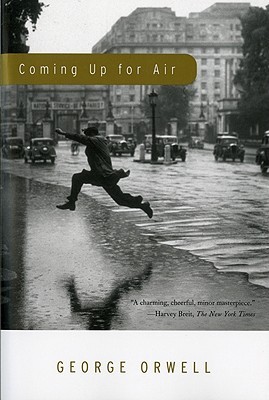
Coming Up for Air by George Orwell
My rating: 5 of 5 stars
Before starting to read Coming Up for Air, I was 150 pages into a lesser known Dickens called Martin Chuzzlewit. I had resigned myself to the pompous 19th Century style, with its improbably overwritten dialogue and run-on sentences. After all, it was a Dickens, and that meant the payoff would be a good story.
Well, there is a reason why Chuzzlewit was lesser known. 140 years before the Fonz was doing it on waterskis, Dickens managed to jump a rather ugly shark – petty personal grievances arising from his America trip, and the even more unforgivable sin of writing what he did not know. And as the story of Chuzzlewit became less engaging, the prose appeared to grow more overwritten and tortorous by the page.
Coming out of this and into a nice George Orwell felt like, well, coming up for air. It also put Orwell’s style in just the right social context. He was among those post-WWI writers whose plain prose stood in deliberate counterpoint to the exclusive and pretentious verbosity of the Victorians, for whom ‘common’ was a synonym of ‘cheap’. For Orwell, a plainly written novel was in itself a political statement: the socialism of the written word.
This theme is also perfectly echoed in the book itself, which tells the story of an ordinary middle aged man with a deliberately ordinary name – George Bowling – whose life spans the trenches of the Great War. As his youth unfolds in memory, the reader is taken through the great changes that redefined England in the early 20th Century. The social: A shopboy finding a higher place in the new social order, with its illusion of meritocracy, and ‘iron cage’ economy. The physical: The engorgement of bucolic villages by industry, the surburban sprawl of London, turning the South of England into the ugly maze of A-roads, roundabouts and semi-detatched houses we all know and hate.
Coming Up for Air is also a deeply personal story, unlike Orwell’s more overtly political (and better known) works. Drawing on personal experience, the author manages to tread the perilous line of a flawed protagonist; one who yet remains human enough for us to like. That’s not easy to do. But Orwell goes further – he crafts a tale that is captivating despite having no real plot beyond whether or not George Bowling will catch a fish.
Yet the novel is most memorable not for its retrospective on the first four decades of the 20th Century, but rather for its precience concerning the fifth. At various times during my read, I had to return to the copyright page to check that the book truly was written in 1940. The foreshadowing of the Second World War was so uncanny it left the impression that Orwell had written it 8 years later, when the dust had begun to settle. This in itself makes the book compelling, especially for today’s reader, whose spidey sense is perhaps tingling with the same grim forebodings.
In summary, if you were to read only one book that covers the great social change in England caused by the wars, this would be the one I would recommend.
View all my reviews
My review of ‘The Truth’ by Stanisław Lem
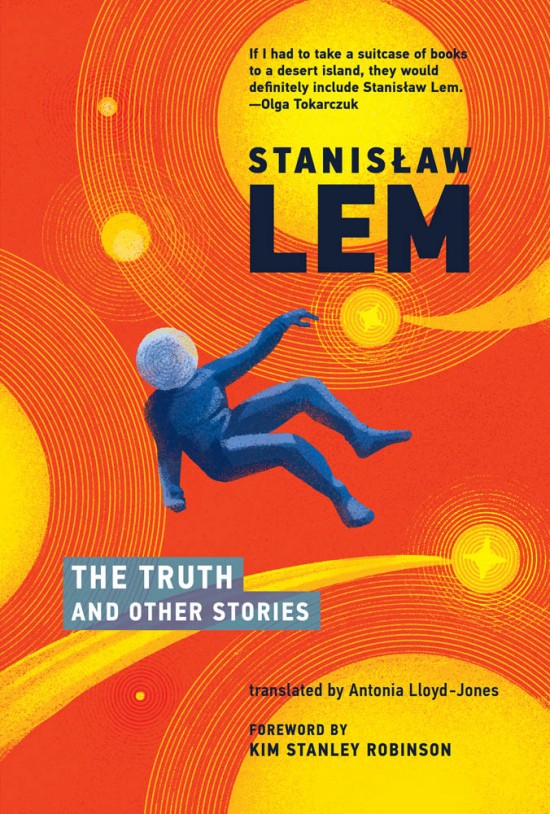 The Truth and Other Stories by Stanisław Lem
The Truth and Other Stories by Stanisław Lem
My rating: 5 of 5 stars
I just finished the title short story, The Truth, with tremendous thanks to a Polish friend of mine, who recommended it to me.
Humbly and with embarrassment for my Anglo-centricity, I am forced to admit I would otherwise never have read Lem, nor was I even truly aware of his existence as a writer – despite his having written the book behind the classic sci-fi film Solaris.
Yet The Truth, in its execution and in the concepts it evokes, is as deserving of a place among the great works of 20th Century sci-fi as anything written by Bradbury, Asimov or Clarke.
Nor does the genius of the story repose entirely on the strength of its ideas. The writing is more than competent – some passages touch on the beautiful. But what I really liked was how Lem uses the common narrative device of an unreliable narrator to reflect on a personal level the story’s (eponymous) philosophical question. In this way, he creates a perfect mirror between the metaphysical and the psychosocial.
Of course, in the end, it is the ideas that are the lasting mark of this story’s greatness. Here we come back to humility – in under ten thousand words, Lem manages to construct a plausible hypothesis that challenges our most basic assumptions about the universe and our place in it. That is enough to humble even the most widely read sci-fi enthusiast.
The Truth deserves more than just five stars. It deserves all of them.
My review of Philip K. Dick’s “Ubik”
Ubik by Philip K. Dick
My rating: 5 of 5 stars
The promotional quote on the cover my copy of Ubik is from Terry Gilliam. It reminds the would-be reader that “Philip K. Dick got there first.”
I took this as a warning more than a commendation. So often, we find the pioneers of great art lacking, when seen in the rear view mirror of progress. They have been copied, improved upon, and remain only as curiosities, historical artefacts who can better help us appreciate their successors.
Such will not be the fate of Philip K. Dick. His work remains timeless and inspiring today, even after all the copycats. One can barely imagine what it must have been like to read him in his heyday, the late 1960s, when even the whiff of such ideas had not yet been breathed into existence.
To be sure, there are weaknesses in the writing of Ubik. The prose is typical of mid-20th Century America, naive and blunt, almost to the point of disrespect for the English language. As if the very conventions of writing were a hindrance to Dick and the ideas that were dear to him. If Dick had had some other means of conveying those ideas – perhaps via the very instruments of telepathy he describes in the story – he would likely have made recourse to them.
But the ideas remain timeless, uncompromising in their complexity. Inspiring stories like The Matrix, but going further and deeper into the metaphysical. Asking questions of the reader, instead of providing the comfortable, Hollywood answers to which we have since grown accustomed.
I take the fact that Dick has yet to be outclassed by those who follow in his wake as a testament to his greatness. His apostles should take it as a challenge.
View all my reviews
My review of Andre Gide’s “Straight is the Gate”
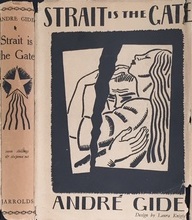 Straight Is the Gate by André Gide
Straight Is the Gate by André Gide
My rating: 4 of 5 stars
It so often happens that I read 19th Century fiction and marvel at how much better the writers of the day were at controlling the mechanics of their craft. Characters are richer, the vocabulary is wielded with greater ease and the plots flow with the confidence of certain conclusion. Is it the Great Filter of History in action? Or is it simply that our ancestors spent more time reading and writing than we do, therefore became better at it?
Whatever the reason, Andre Gide’s “Straight is the Gate”, a masterful novella, is further evidence that older is sometimes better. Even in translation, it easily surpasses most, if not all, of the digitally processed fast food that streams across the cyberbookshops of the digital age. And as is often the case, it does so without the aid of gimmickry: no bodies on page two, and a simplicity of narrative style (first person, referencing the letters of a second person) at which most modern writers would balk – I am including myself here.
The story is nonetheless interesting, in the very complexity of its eventlessness. A young couple, in love, yet unable to come together as a result of twisted piety and self-imposed restraint; one which belies a deeper psychological illness. I have often reflected how the current state of COVID-hysteria has a religious dimension to it, and in reading ‘Straight is the Gate’, I found eerie parallels. The female protagonist, Alissa, uses her religion as a cloak for her mental illness, in the same way our mentally ill society is using COVID as an excuse to collapse into itself.
Great novels may yet be written about our time, which explore a similar theme – how COVID is being used by the mask-wearing masses to shield themselves against the emotional void created by this godless, consumerist society in which they feel so lost. I just hope that, buried in the ashheap of digital junkies, there are enough real writers out there with the craft to do such a theme justice.

